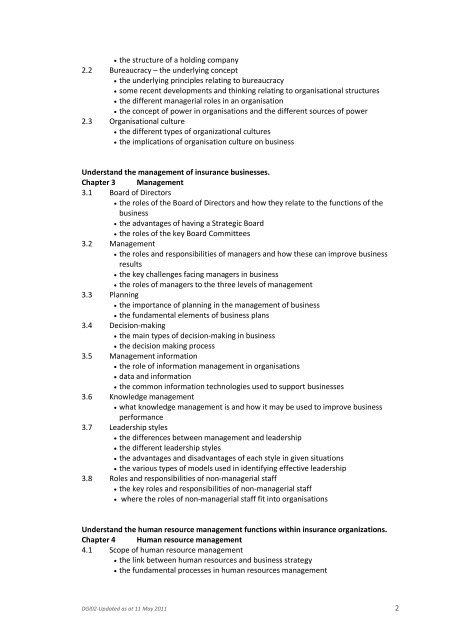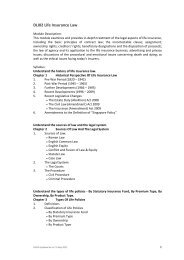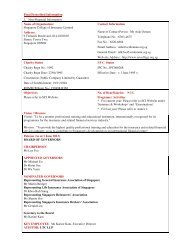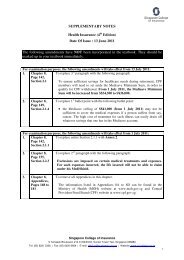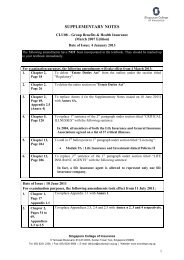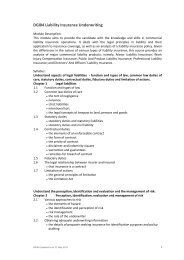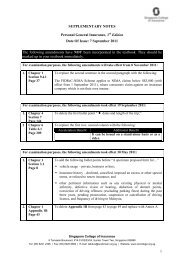DGI02 Insurance Company Operations - Singapore College of ...
DGI02 Insurance Company Operations - Singapore College of ...
DGI02 Insurance Company Operations - Singapore College of ...
You also want an ePaper? Increase the reach of your titles
YUMPU automatically turns print PDFs into web optimized ePapers that Google loves.
the structure <strong>of</strong> a holding company<br />
2.2 Bureaucracy – the underlying concept<br />
the underlying principles relating to bureaucracy<br />
some recent developments and thinking relating to organisational structures<br />
the different managerial roles in an organisation<br />
the concept <strong>of</strong> power in organisations and the different sources <strong>of</strong> power<br />
2.3 Organisational culture<br />
the different types <strong>of</strong> organizational cultures<br />
the implications <strong>of</strong> organisation culture on business<br />
Understand the management <strong>of</strong> insurance businesses.<br />
Chapter 3 Management<br />
3.1 Board <strong>of</strong> Directors<br />
the roles <strong>of</strong> the Board <strong>of</strong> Directors and how they relate to the functions <strong>of</strong> the<br />
business<br />
the advantages <strong>of</strong> having a Strategic Board<br />
the roles <strong>of</strong> the key Board Committees<br />
3.2 Management<br />
the roles and responsibilities <strong>of</strong> managers and how these can improve business<br />
results<br />
the key challenges facing managers in business<br />
the roles <strong>of</strong> managers to the three levels <strong>of</strong> management<br />
3.3 Planning<br />
the importance <strong>of</strong> planning in the management <strong>of</strong> business<br />
the fundamental elements <strong>of</strong> business plans<br />
3.4 Decision‐making<br />
the main types <strong>of</strong> decision‐making in business<br />
the decision making process<br />
3.5 Management information<br />
the role <strong>of</strong> information management in organisations<br />
data and information<br />
the common information technologies used to support businesses<br />
3.6 Knowledge management<br />
what knowledge management is and how it may be used to improve business<br />
performance<br />
3.7 Leadership styles<br />
the differences between management and leadership<br />
the different leadership styles<br />
the advantages and disadvantages <strong>of</strong> each style in given situations<br />
the various types <strong>of</strong> models used in identifying effective leadership<br />
3.8 Roles and responsibilities <strong>of</strong> non‐managerial staff<br />
the key roles and responsibilities <strong>of</strong> non‐managerial staff<br />
where the roles <strong>of</strong> non‐managerial staff fit into organisations<br />
Understand the human resource management functions within insurance organizations.<br />
Chapter 4 Human resource management<br />
4.1 Scope <strong>of</strong> human resource management<br />
the link between human resources and business strategy<br />
the fundamental processes in human resources management<br />
<strong>DGI02</strong>‐Updated as at 11 May 2011 2


